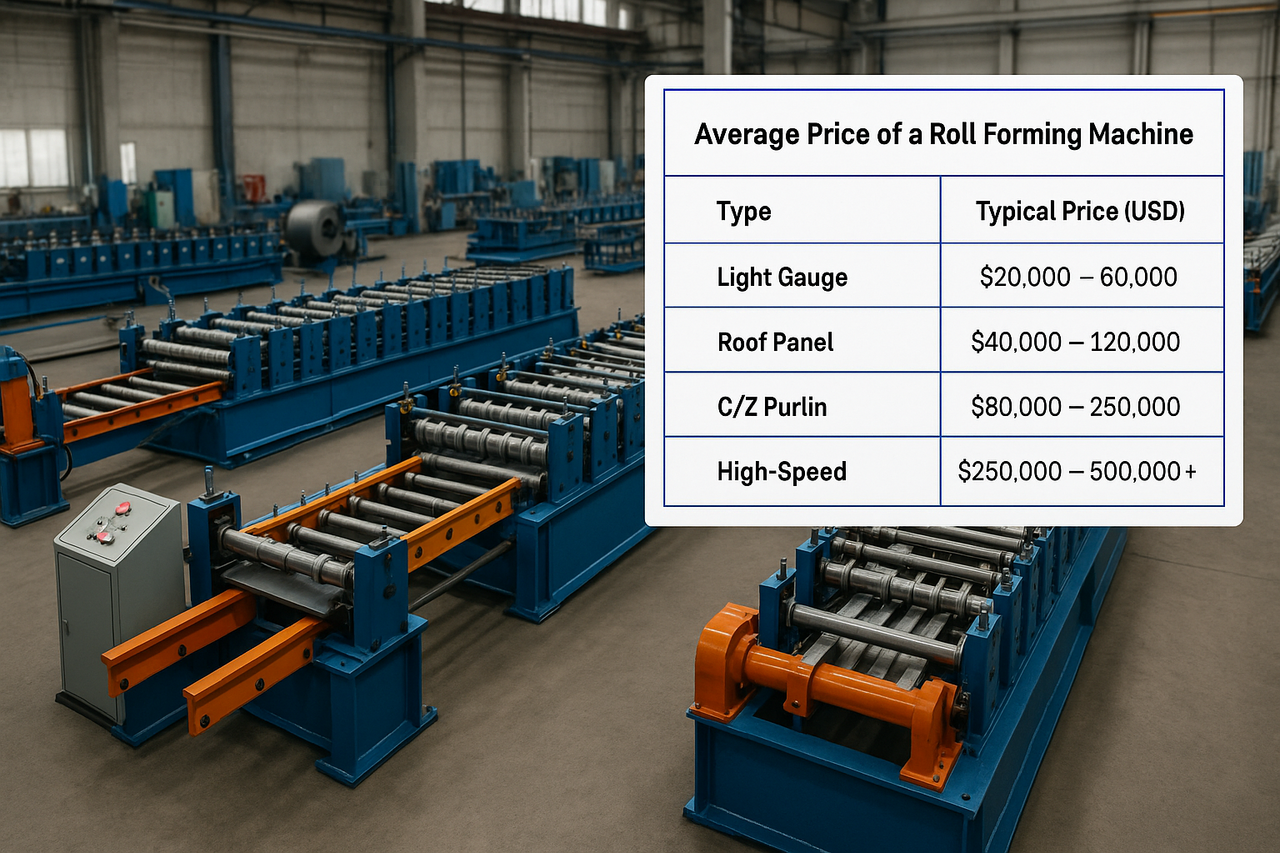1. Assess Your Current Operations
- Evaluate Capacity: Analyze your current production capacity and identify any bottlenecks in your processes.
- Review Financial Health: Ensure that your business is financially stable, with healthy cash flow and profit margins.
2. Set Clear Goals
- Define Growth Objectives: Determine specific growth targets, such as increased revenue, new product lines, or entry into new markets.
- Identify Key Performance Indicators (KPIs): Establish metrics to measure success, such as production efficiency, lead times, and customer satisfaction.
3. Market Research
- Identify New Markets: Conduct market research to find potential new markets, whether regional or international.
- Understand Customer Needs: Analyze customer preferences and demand for specific roll-formed products in these markets.
4. Invest in Technology
- Evaluate New Machinery: Research and assess the latest roll forming technology that could enhance your production capabilities.
- Consider Automation: Explore automated systems to improve efficiency and reduce labor costs. Investing in smart technology can also improve precision and minimize waste.
5. Expand Production Capacity
- Add New Machines: When demand justifies it, invest in new machines to increase production capacity. Consider custom machines tailored to specific product lines.
- Optimize Existing Equipment: Ensure current machinery is well-maintained and optimized for maximum output. Regular maintenance can prolong equipment life and enhance performance.
6. Streamline Operations
- Improve Workflow: Analyze your production process for efficiency. Implement lean manufacturing techniques to reduce waste and improve productivity.
- Training and Development: Invest in training your workforce to maximize the use of new technology and maintain high-quality standards.
7. Diversify Product Offerings
- Develop New Products: Explore opportunities to diversify your product lines based on market demand. This could involve creating custom profiles or specialized components.
- Collaborate with Customers: Engage with existing customers to understand their needs and develop solutions that can open up new product opportunities.
8. Marketing and Sales Strategy
- Enhance Marketing Efforts: Invest in marketing strategies to increase brand visibility, including digital marketing, social media, and trade shows.
- Build Relationships: Strengthen relationships with existing customers while actively seeking new clients in targeted industries.
9. Consider Strategic Partnerships
- Form Alliances: Look for partnerships with other manufacturers or suppliers to enhance your market reach and capabilities.
- Leverage Distributors: Collaborate with distribution networks to penetrate new markets more effectively.
10. Monitor and Adjust
- Regularly Review Performance: Continuously monitor KPIs and market trends to assess the effectiveness of your growth strategy.
- Be Flexible: Be prepared to pivot your strategy based on feedback and changing market conditions.
Conclusion
Scaling a roll forming business involves strategic planning, investment in technology, and a deep understanding of market dynamics. By following this roadmap, you can effectively expand your operations, increase production capacity, and enter new markets while maintaining quality and efficiency. Remember, growth is a continuous process that requires ongoing evaluation and adaptation.



